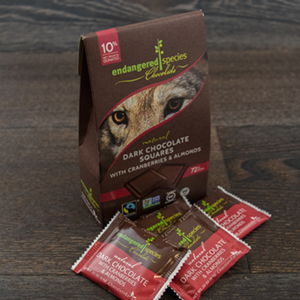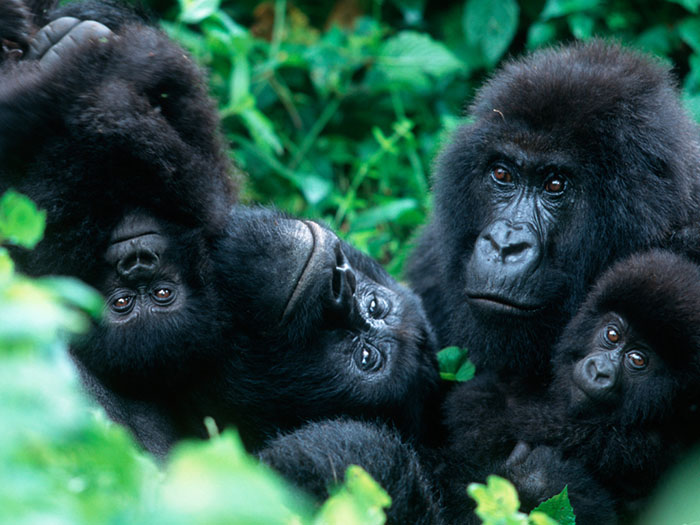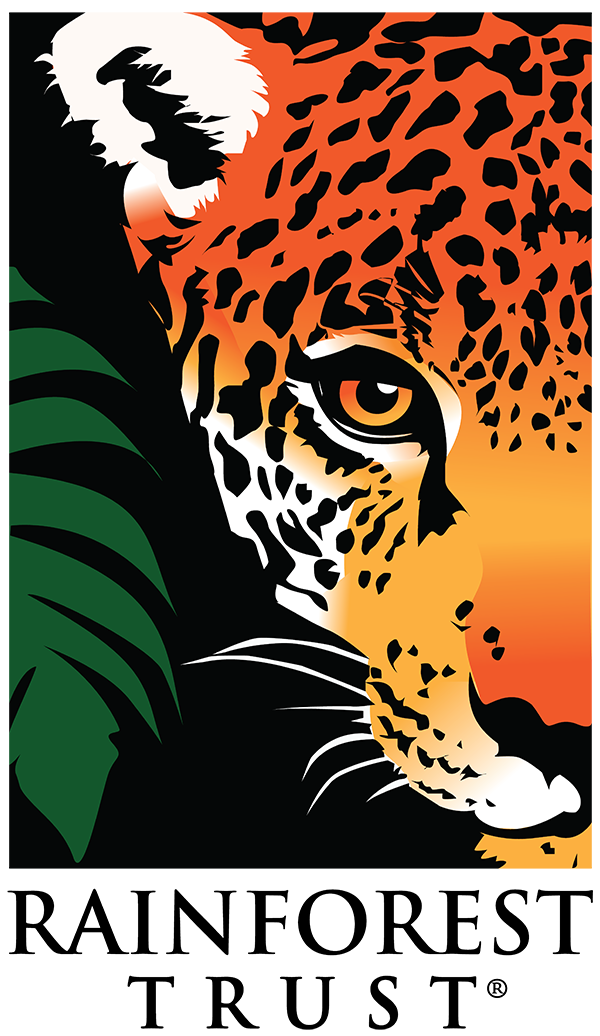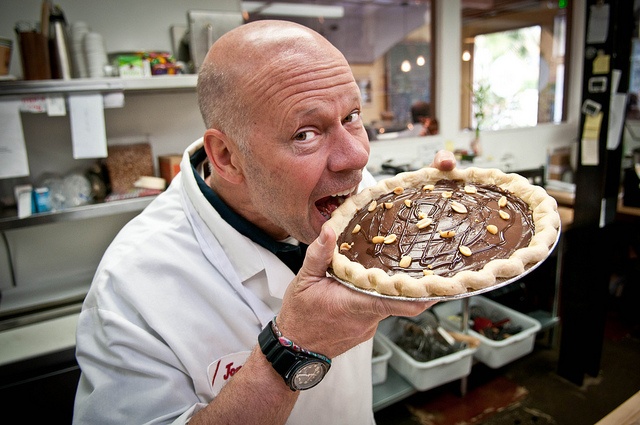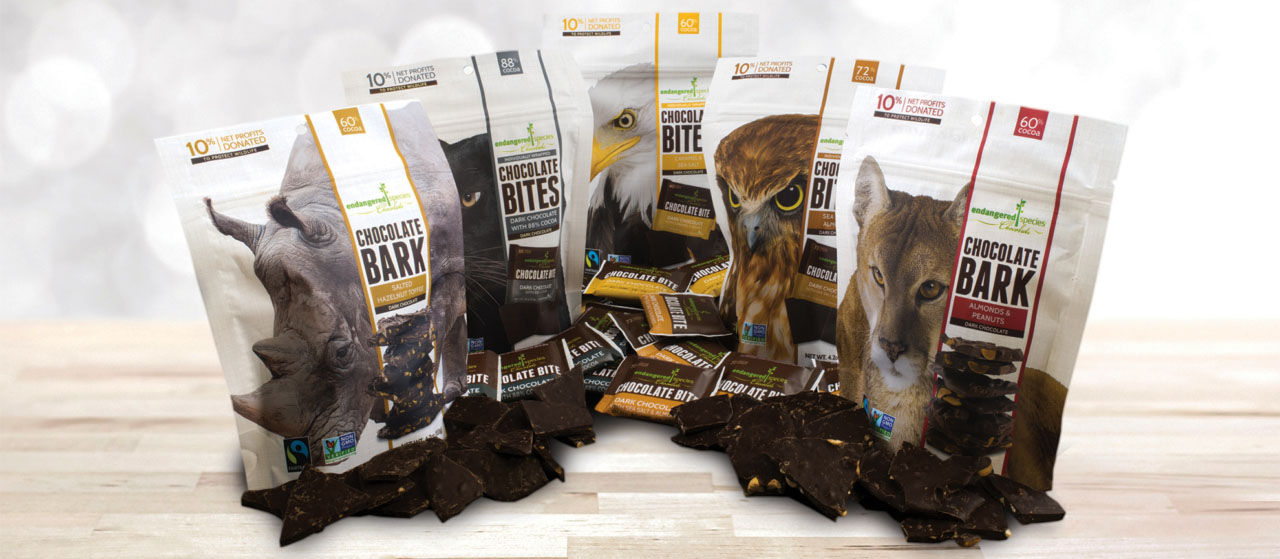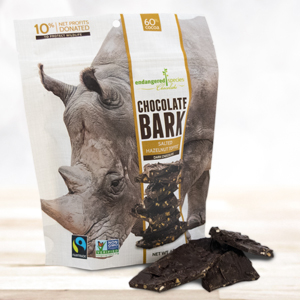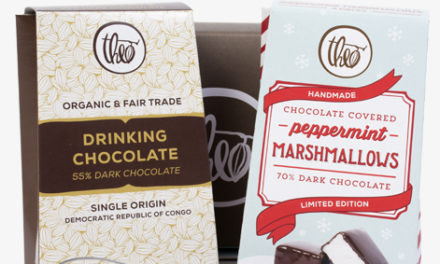“We’ll keep doing our part, creating chocolate too delicious to resist, with one goal in mind – to grow our GiveBack, year after year. With your support, there’s no limit to the good we can do!”
– Curt Vander Meer, CEO, Endangered Species Chocolate
All In a Name
Endangered Species Chocolate (ESC) doesn’t believe in guessing games. Their name equates to their mission, which is helping endangered species. You’ll appreciate what this chocolate company is doing, especially if you’re an animal lover, as they donate ten percent of net profits annually to their current 10% GiveBack Partners.
They guarantee each partner a minimum annual donation of $10,000, and those partners are free to use the funds on projects they deem most important.
With over $1.3 million given to GiveBack partners in the past three years alone, little purchases added up to big changes for these partners. It’s clear, each time you buy Endangered Species Chocolate, you’re helping wildlife thrive.
Let’s take a look at ESC’s most recent past partners, the Xerces Society for Invertebrate Conservation and the African Wildlife Association.
GiveBack Partners Past & Present
The Xerces Society is an international nonprofit organization that protects wildlife through the conservation of invertebrates and their habitats. They take their name from the now extinct Xerces Blue butterfly (Glaucopsyche xerces), the first butterfly known to go extinct in North America as a result of human activities.
Their core programs focus on habitat conservation and restoration, species conservation, protecting pollinators, contributing to watershed health, and reducing harm to invertebrates from pesticide use.
ESC’s other past partner, African Wildlife Foundation, has a mission to ensure that the wildlife and wild lands of Africa flourish forever, with the help of the African people. This mission translates into a wide range of projects, including the Great Fish River Rhino Conservation, where rhinos are protected from poaching, the biggest threat to the existence of this species.
Another project involves saving all of Africa’s great ape species, which are either endangered or critically endangered due to a number of threats, including habitat destruction and fragmentation, poaching, the risk of disease transfer from humans, and the pet trade.
This year’s partners are equally interesting — Rainforest Trust and the Wildlife Conservation Network.
Since its founding in 1988, Rainforest Trust has helped local, in-country conservation organizations protect and save over 16 million acres of threatened tropical habitats for endangered wildlife in more than 100 project sites across 26 countries in Africa, Asia and Latin America.
Just a small sampling of their projects includes maintaining a sanctuary for Scalloped Hammerheads in Costa Rica, saving the lost forest of Madagascar and creating a paradise for Flying Foxes at risk in the Pacific.
The Wildlife Conservation Network (WCN) was built on the premise that one person can truly make a difference for wildlife. WCN saves endangered species in 37 countries around the world by supporting independent wildlife conservationists by giving them the tools and funding they need to succeed.
WCN is busy protecting the Andean cat in the Andes Mountains and Patagonia steppe, battling the ivory crisis and protecting elephants in Africa, as well as protecting African Wild dogs and cheetahs, as well as many other endangered species.
ESC’s support for these four partners is summarized in their 2016 Impact Report, which can be viewed by clicking here.
I definitely recommend checking the report out. It’s incredibly inspiring to see how your chocolate purchase truly can make a difference.
Man Saves Dolphin
The story behind Endangered Species Chocolate begins with founder Jon Stocking. Though the exact event timeline and details are slightly obscure, their importance isn’t. The overall background on Stocking tells us that he had been trained as a chef in Europe, where he learned the fine craft of chocolate-making.
Details are somewhat sketchy, but apparently prior to that training, while saving money for his culinary dreams in the 1980’s, John worked as a cook on a tuna fishing boat. It was while working on the boat that he was horrified to see fishermen accidentally trap and drown dolphins in their fishing nets, while fishing for tuna.
He saw a baby dolphin trapped in the net, heard its cries and noticed its mother swimming nearby, who was distraught. Jon jumped into the water, cut the net, and set the baby dolphin, along with other trapped marine mammals, free.
That’s Great Dad, Now Please Save the Elephants Too!
Of course, the fishing company promptly fired Jon, but the experience triggered some deep thinking on dolphins and all the animals potentially headed to extinction. He wasn’t wealthy, but Jon desperately wanted to make a difference.
Later on, while in the States, he was at the zoo with his four-year-old daughter who asked, “Daddy, why are elephants tied up?” This prompted a long conversation between father and daughter, and she wanted to know what her daddy was going to do about it. Perhaps that moment, or his experiences on the boat, or both, acted as the catalyst to create Endangered Species Chocolate in 1993.
Dark Times for Endangered Species Chocolate
There’s dispute over exactly what went down back in 2005, when Wayne Zink and Randy Deer, an Indianapolis pair, invested in Stocking’s chocolate company. Apparently, the deal included a five-year employment contract that provided for Stocking to stay on as president, but they fired him in April 2005, just months after closing a deal in January.
The investors claimed, among other things, that Stocking didn’t accurately disclose company records. Stocking filed an $18 million lawsuit alleging fraud, breach of contract and racketeering.
As part of the settlement, which was mediated in federal court, the parties agreed not to discuss the case in public. But Endangered Species’ new owners apologized in writing to Stocking, his family, former employees and the community for the “emotional and financial impact” of the dispute. The letter at one point noted —
“It is tragic and unfortunate that these lawsuits and allegations have cast any doubt whatsoever upon Jon Stocking’s character, honesty and integrity.”
“The letter was a very important component to me,” Stocking stated.
Since then, the company relocated to Indianapolis, Indiana, and CEO Wayne Zink transitioned from company operations to become president of the Endangered Species Chocolate Foundation (www.escfoundation.org), the non-profit arm of the company. He also serves as chairperson of ESC’s board of directors. Curt Vander Meer is now CEO of Endangered Species Chocolate.
Meanwhile, Jon went on to create Republic of Pie, a coffee and pie shop located in North Hollywood, CA. When asked why he chose pie, Jon answered, “I wanted to do something interesting… something organic and healthy.” The shop boasts a solid four-star rating on Yelp, and according to some of those reviews, “the place has a really cool, hipster ambiance without the pretentiousness.” Rock on Jon, rock on.
A Continued Commitment
One thing is for certain, ESC’s commitment to their GiveBack partners is still strong. Just go to their website and the first thing you’ll read revolves around their partners and the wildlife causes they support.
And it doesn’t stop there. They strive to create good chocolate with ingredients that meet strict standards for quality, ethical trade and environmental sustainability.
“Choosing our chocolate is one way you can honor farmers and support sustainable farming practices. We pay a social premium for our ingredients to ensure that farmers are supported and species are protected. Please take a look at our certifications.”
Yes, let’s do just that!
Unsurprisingly, Endangered Species Chocolate, from the start, looked to create stringently ethical and healthy chocolate. Making a commitment to animals starts with making a commitment to ourselves as people, and ESC boasts a large cadre of important certifications, most of which you’ll find in our four-part What’s In a Label series that concludes here in the June issue.
Connect with Endangered Species Chocolate on social media, too:
FACEBOOK — http://www.facebook.com/endangeredspecieschocolate
INSTAGRAM — https://www.instagram.com/eschocolate/
PINTEREST — https://www.pinterest.com/eschocolate/
TWITTER — http://www.twitter.com/esc_chocolate


